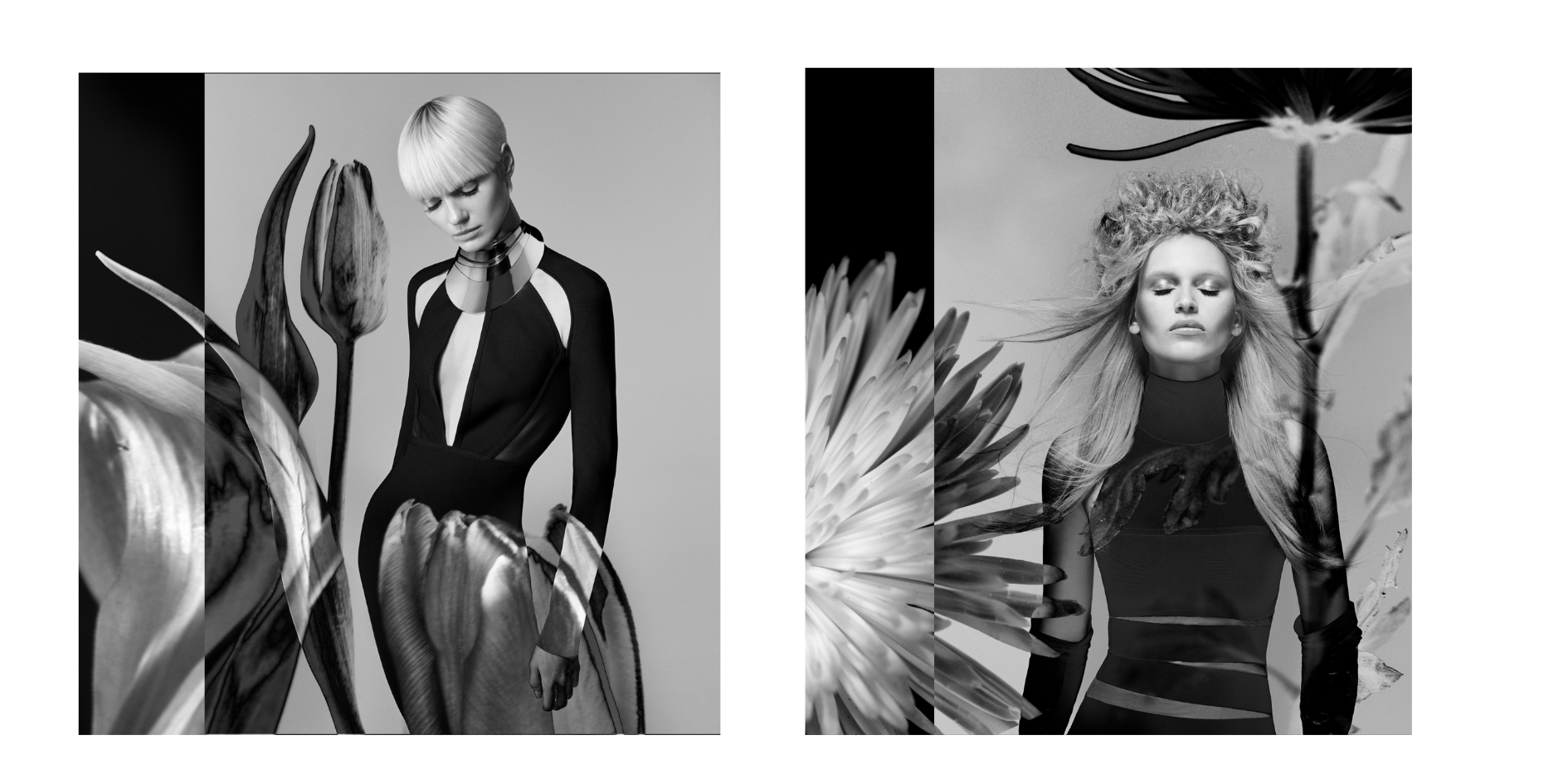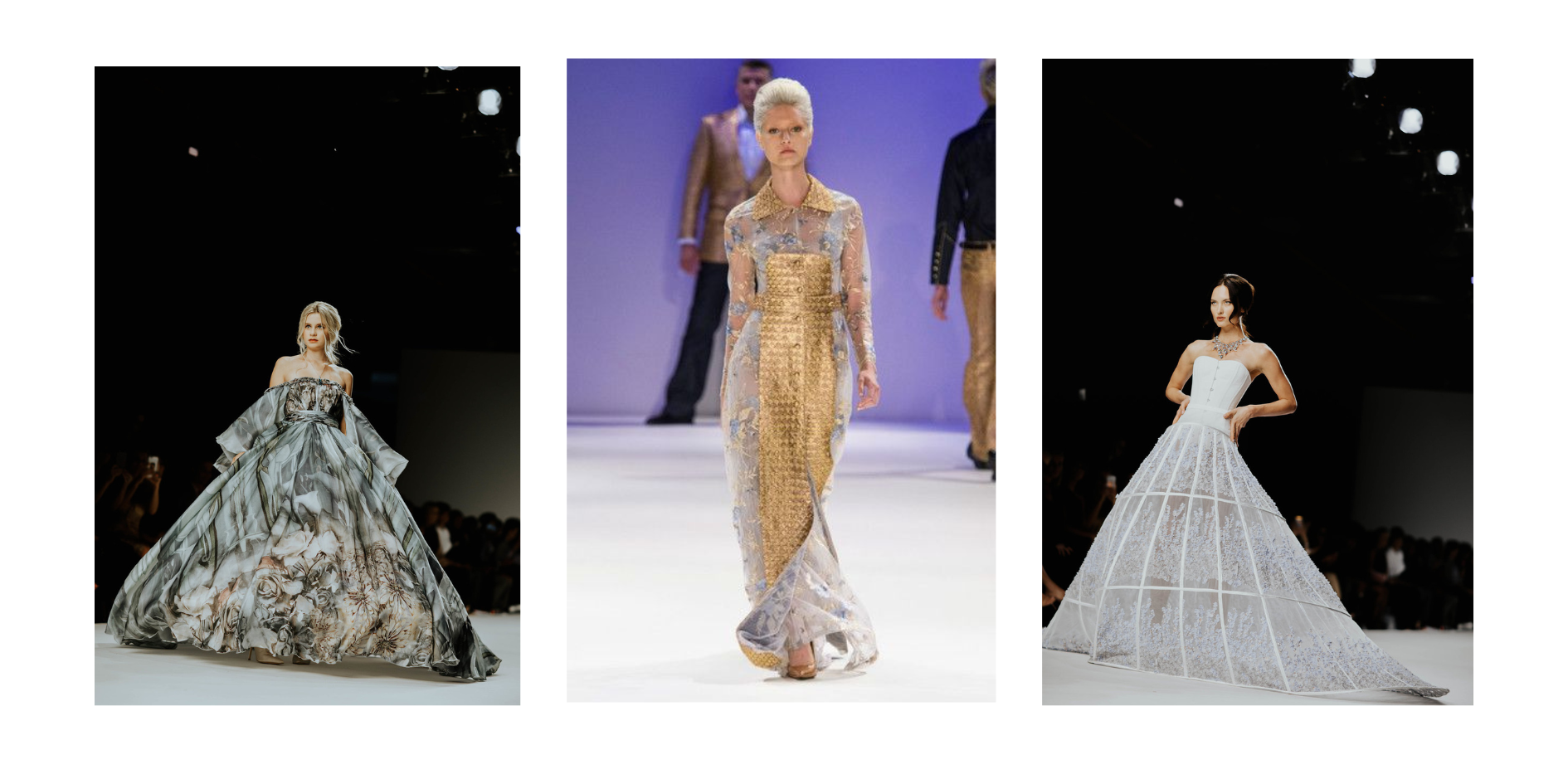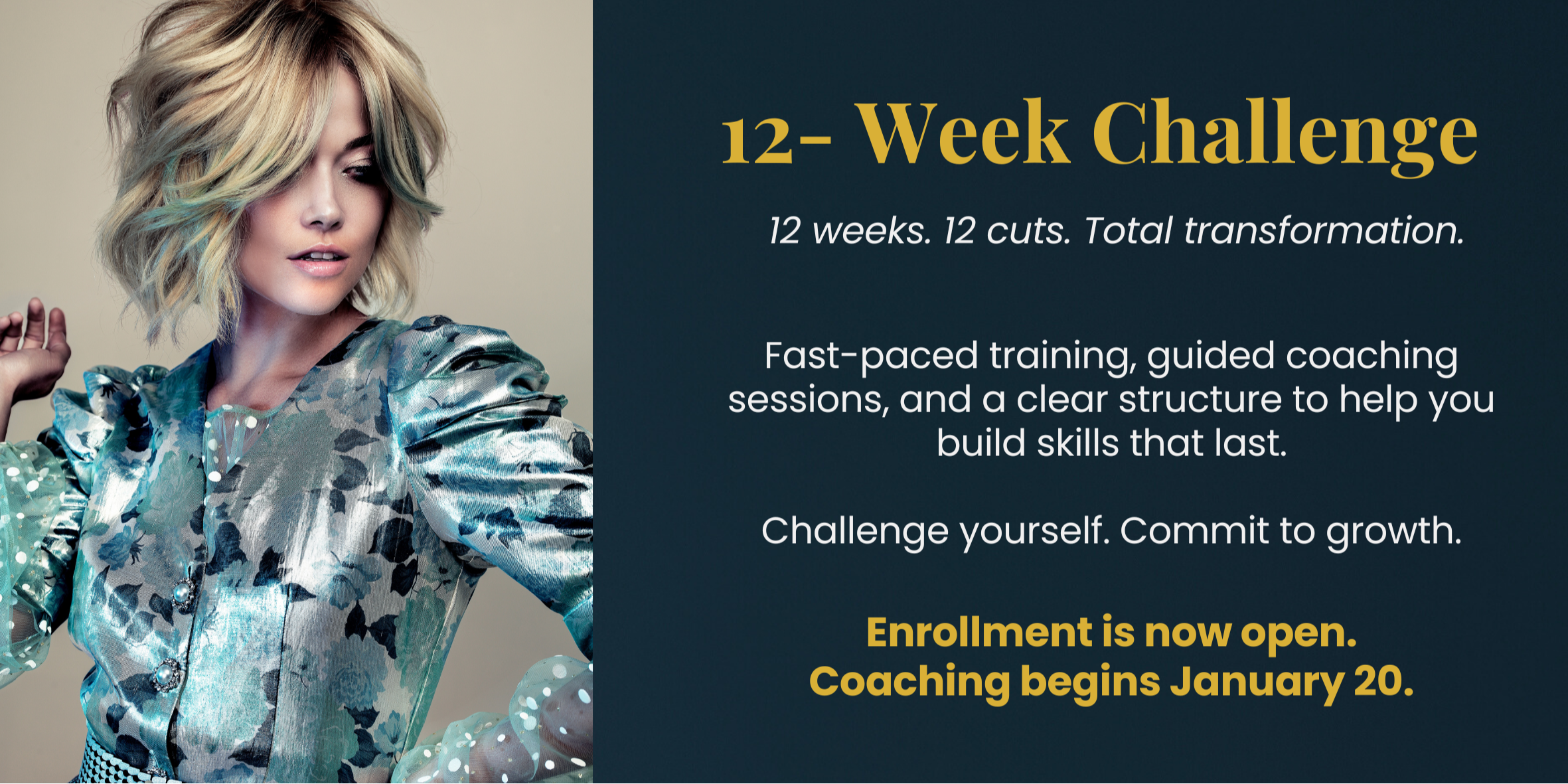The One Skill That Separates Great Hair Stylists From Good Ones — and the Framework Behind It
Apr 11, 2025The Fine Line Between Creativity & Bad Taste — Why Every Stylist Needs to Master Long Hair Styling
If you’ve ever felt stuck behind the chair — second-guessing your choices, defaulting to the same looks, or worrying your work isn’t “creative enough” — this is for you.
You don’t need more inspiration — you need a mindset shift. One that takes you from scared technician to confident, creative stylist.
Inside this article, you’ll learn the exact shift that unlocks clarity in your creative process, how to stop playing it safe, and the hidden cost of doing things “the usual way.”
Here’s what we’ll cover:
-
The Brutally Honest Feedback That Unlocked My Creative Breakthrough
-
The Long Hair Stylist’s Mindset — How to Design with Confidence, Creativity & Clarity
-
My 6-Step, Breakthrough Framework for Confident, Creative Styling
Expect plenty of ah-ha moments — the kind that change how you approach styling forever.
The Day I Realized I Wasn’t a Designer — Yet
I’ll never forget the day I walked onto a photo shoot in London and, within minutes, felt completely out of my depth.
The weight of expectation. A top photographer. A major magazine. And me — fumbling with two left hands, unclear on the brief, unsure of the direction, trying to fake my way through the day.
I remember hiding in the bathroom between takes, tears streaming down my face. I was embarrassed, frustrated, and heartbroken. I threw myself a full-blown pity party — and in that moment, I made myself a promise: Never again.
The truth? Even though I’d trained at the London College of Fashion, studied the history of hair, and learned timeless techniques from theatre and film — nothing prepared me for the real-world demands of storytelling through hair.
Nothing taught me how to read a room. Nothing taught me how to see beyond the technique. Nothing taught me how to design with intention.
And it wasn’t the only time I felt that sting.
Years earlier, while working at Vidal Sassoon, I was booked to style a bride based on my growing reputation. But no one had ever taught me how to truly connect with a client.
No one had ever taught me how to conduct a proper consultation. I didn’t ask about her dress, the tone of the wedding—whether it would be in a grand cathedral or a quaint town hall—or how she envisioned feeling on her special day. Did she dream of looking romantic, or was she leaning towards something glamorous? I simply didn’t know to ask.
Instead, I offered her A or B — two styles I felt safe executing — and crossed my fingers she’d choose one.
In both situations, I had the skills. But I wasn’t a storyteller. I wasn’t a designer.
I was doing what I knew — not what was right for the person sitting in my chair.
The Brutally Honest Feedback That Unlocked My Creative Breakthrough
After those hard-earned, humbling experiences in London — the photo shoots, the consultations, the moments where I felt completely lost — I knew something had to change. I didn’t just want to be a good stylist. I wanted to be great.
But I didn’t realize just how much I still had to learn…
One of the most powerful and career-shaping lessons came from none other than the legendary Trevor Sorbie — one of the greatest hairdressers in the world.
At the time, I had the honor of being his Artistic Director. We were on tour in the U.S., and Trevor had asked me to design a bold, innovative new collection using wigs, hairpieces, and creative styling.
I poured my heart into the work — daring, dramatic, avant-garde. I wanted Trevor to be proud. When he flew in from London, I stood anxiously beside the lineup of looks I had crafted, waiting as he walked silently around the room, inspecting every detail. His sharp eyes said nothing… and the silence was unbearable.
Finally, he stopped, turned to me, and said words I’ll never forget:
“Vivienne, there’s a fine line between creativity and bad taste.”
Tears welled up. I swallowed hard and asked,
“Trevor… which side of the line am I on?”
Without hesitation, he said:
“Bad taste. You’ve tried too hard. You didn’t know when to stop. You put everything on the head except the kitchen sink. Your lack of confidence made you do more and more, instead of less and less. You got lost in the detail.”
It crushed me. But it was also one of the greatest gifts I’ve ever received.
Because that day, I finally understood:
Real creativity isn’t about doing the most — it’s about knowing when to stop.
It’s about clarity. Confidence.
Keep this in mind: Taste, balance… and storytelling.
The Long Hair Stylist’s Mindset — How to Design with Confidence, Creativity & Clarity
The Mindset Shift
There’s a moment every creative professional must face — the realization that skill alone isn’t enough.
You can have the best tools, the most refined techniques, and years of experience… but if your mindset isn’t aligned, you’ll always second-guess your choices. You’ll chase trends. You’ll get stuck between what you know how to do and what you wish you could create.
That’s where I see so many brilliant stylists get stuck: in the gap between technical ability and creative confidence.
Technique Will Only Take You So Far — Style Will Take You All The Way
And that’s why shifting your mindset is non-negotiable if you want to step into your role not just as a stylist — but as a designer, a storyteller, and an artist. Because when your mind is clear, your creativity follows.
Let me share something personal with you… Even after decades in this industry — working behind the scenes of fashion shows, editorial campaigns, red carpets, teaching globally, and being classically trained — I’ll be honest: Every time a new client sits in my chair, there’s still a whisper of anxiety. That little voice that says: “I hope I get this right.”
But here’s what changed everything for me: Over the years, I developed what I now call my My 6-Step Breakthrough Framework for Confident, Creative Styling — a mindset and strategy that helps me shift out of anxiety and into alignment.
It’s what allows me to walk into any room — whether it’s a photoshoot, a celebrity prep session, or a bridal consultation — and make clear, creative, intentional choices.
And today, I want to share it with you. Because when you understand how to design with confidence, clarity, and creativity — you’ll stop hiding behind options A and B. You’ll start creating work that’s elevated, editorial, and deeply personal to the person in front of you.
But before we can unlock your creativity, we have to address what’s holding it hostage.
What’s Really Getting in the Way of Your Creative Growth
1. Doom Scrolling on Social Media
We live in a world of endless hair inspiration — YouTube, TikTok, Pinterest, Instagram, all showing you “quick fixes,” viral styles, and 10-second tutorials.
But no reel or tutorial can teach you how to make the right choice for the real human in front of you. They won’t tell you how the style will sit with her posture, her presence, her story. And that’s where so many stylists fall short.
Because at the end of the day:
-
The technique will only take you so far.
-
Taste, balance, and storytelling will take you all the way.
A client might reject your hairstyle — and it’s easy to take that personally. But often, it’s not your skill they’re rejecting. It’s your selection.
2. Creativity Is a Muscle — and Most Stylists Let It Atrophy

Not long ago, I broke my arm. Within days, my muscles began to shrink. Seven weeks later, one arm was strong — the other limp and weak.
That’s exactly how creativity works.
If you don’t use it, it withers. If you don’t train it, it won’t grow. If you don’t stretch it, it stays small.
That’s why I always remind my students:
-
Creativity without direction is chaos.
-
Creativity without taste is noise.
-
But creativity paired with skill, story, and restraint? That becomes art.
My 6-Step Breakthrough Framework for Confident, Creative Styling

So how do we move from anxiety to alignment? From “hoping it works” to “knowing it will”? Here’s my simple, powerful Breakthrough Framework — the same one I use in every high-level creative decision:
- Step One: Study & Observe
- Step Two: Vogue Around The Face
- Step Three: The Body Matters — Head to Toe
- Step Four: Rehearse the Design
- Step Five: The Three Wheels of Fashion (TM)
- Step Six: Head, Heart & Gut
Step One: Study & Observe
Put your tools down!

The first thing I do is simple — but often skipped. I put my tools down. I step back and study the client. I look at their face shape. Where would the oval live? Is she square in the jawline? Wide in the forehead? Long in the chin? I apply the Law of the Third:
- Forehead to brow
- Brow to end of the nose
- Nose to chin
These three sections should be proportionate — and if they’re not, I design to create that balance.


Step Two: Vogue Around The Face
What does that mean? Literally, use your hands to "frame" or "open" the face. Move the hair around, and play with how length and width change the shape of the face.
For example: If your client has a pear face shape — a narrow skull with a wide, heavy jawline — you can build volume on top of the head to balance and soften as shown in the photo above.

You are always asking:
How can I find the oval? How can I restore proportion?

Step Three: The Body Matters — Head to Toe
Great style doesn’t stop at the shoulders. Get your client to stand up. Look at her body type. Is she an apple, pear, or banana shape? If she’s horizontally challenged (pear or apple), you don’t want to create horizontal lines that widen her silhouette — you want to elongate and lift. Design for the whole person, not just the head.

Step Four: Rehearse the Design
Now, I pick up my tools — but only to rehearse. I play with the hair, observing its natural qualities. Is it straight, wavy, curly, or kinky? I pin the hair up casually, showing the client for example:
- Half up / half down
- Side parting or center part
- A ponytail at the nape or high on the crown
This is my rehearsal — it’s the sketch before the painting. And this is where my client’s feedback shapes the creative direction.
Step Five: The Three Wheels of Fashion (TM)
The Three Wheels of Fashion is my guiding light in style selection.
- How loud or quiet should the style be?
- How big or small should the silhouette feel?
- Where does the style live in the world of fashion (for example: rock and roll, classic, glamourous)?
- How romantic bold or sexy should the hairstyle be?
The biggest challenge is not to get lost in the technique, but to balance the design to the face shape, the profile, the fashion, and the person’s energy. That’s when you stop chasing trends and start creating timeless, tasteful beauty.
1. Personality Wheel — How quiet or loud is this hairstyle?
Once the aesthetics are clear, I lean into something deeper — the personality, lifestyle, and energy of my client. This is where my Three Wheels of Fashion come alive.
Does she whisper, scream, or shout with her style? Does she want to be noticed when she walks into a room — or prefers to blend in?

2. Fashion Wheel — Where does she live in fashion?
Is she classic, traditional, bohemian, rock ‘n’ roll, trendy, gothic?

3. Sensuality Wheel — What is the energy she carries?
Is she androgynous? Bold? Soft? Romantic? Sexy? Glamorous?
One technique can shift dramatically when you blend these three wheels. The same hairstyle can feel edgy or elegant, hard or soft, depending on how you shape it to fit her.

Step Six: Head, Heart & Gut
My consultation and design process is not just technical — it’s holistic. It has three vital components:
- The Head (Logic & Strategy):
I have a checklist — face shape, body type, hair quality, fashion personality, proportion, sensuality. - The Heart (Creativity & Joy):
When I connect to the joy of creation, my hands flow. I design from love, not fear. - The Gut (Intuition):
I always listen to my gut. If my client says "yes," but my gut says "no" — I pause, ask more questions, and adjust.
The goal is to notice the mistake in the second, not after an hour. Because when you notice in real-time, you can course-correct before trust is broken and time is wasted.
Now that you know how to design — let’s talk about who you’re designing for.
How to Read the Person in Your Chair
Finally, there’s one more layer: Your clients (and even your fellow hairdressers) fall into three types:
- The Visionary:
Full of ideas, open to creativity, loves adventure. - The Fence-Sitter:
Wants change but struggles with doubt and commitment. - The Resistor:
Will argue, question, challenge, and push back every step of the way.
Your job is to recognize who’s sitting in your chair and meet them where they are. Build trust. Show how much you care. And demonstrate how much you can help.
What to Do With This Framework Next
This blog gave you more than inspiration — it gave you a practical framework. One you can begin applying today to make clear, creative, and intentional choices with your clients.
And as you start to implement these steps, you’ll feel the shift: Less anxiety. More clarity. A deeper connection between your vision and the final result.
But if you're ready to go deeper — to truly master this process and elevate your styling to the highest level — that’s exactly what I teach in my Long Hair Styling Boot Camp.
Inside the Boot Camp, we build on this very framework. We apply it across red carpet, bridal, fashion, and editorial scenarios — with coaching, feedback, and creative direction to help you move from knowing how… to knowing why, when, and how to elevate every look with purpose.
So for now: Start where you are. Use what you’ve learned here.
And when you’re ready to take your skills further — I’d love to support you in the Boot Camp.
Every look you see here was designed by stylists using this exact framework.

The Cost of Getting It Wrong
Let’s talk about something most stylists don’t want to think about — but need to. Because this isn’t just about hair.
It’s about trust. It’s about pressure. It’s about stakes.
I’ve been behind the scenes on editorial shoots where the production day cost over $300,000 — and every second of running behind meant thousands lost. No one’s waiting for you to “figure it out.”
You either deliver, or the whole timeline starts to crack.
I’ve worked on weddings where the bride spent over $1 million on the event — and every single detail, down to the placement of a hairpin, had to be flawless. The pressure? Unimaginable. There’s no room for trial and error.
And then there are the fashion weeks — London, Paris, New York. Once, just one hour before the runway, Vivienne Westwood came backstage, looked at the models and said: “I do not like the hair. Change it.”
Now that takes composure. But thankfully, I was working with the amazing Danilo — hairstylist to the stars — and we just made it work. No drama. No panic. Just mastery.
Here’s what that experience taught me:
If you don’t get the style selection right from the start…
-
The bride will feel uncomfortable and upset.
-
The client will keep touching and fiddling with their hair.
-
The production team will be stressed and behind.
-
The designer could lose confidence in your vision.
-
And worst of all — you’ll lose trust.
And when trust is broken, everything else unravels. That’s why I say this with love: You can’t afford to “wing it.” Not at this level. Not if you want to be taken seriously.
Because in this world —You only get one chance to make a first impression.
And the people who get invited back, who get called again, who build reputations that last — they’re not just talented.
They’re intentional. They’re precise. They design with purpose.
Why Great Style Matters To You

Whether you work behind the chair, in film, theatre, or on the runway — or want to create magic in your salon. You are competing with DIY tutorials, influencer hacks, and clients who learned how to style their hair in the bathroom. How do you rise above that? You become the expert. You learn how to think like a designer — not just a technician.
Long Hair styling teaches you to:
- Design from head to toe.
- Interpret fashion and personality.
- Balance beauty and creativity.
- Avoid panic moments when everything is falling apart.
Recognize and fix mistakes in the second — not after the client says, "I don’t like it."
The Art of Elevation — Why Growth Is the Key to Greatness

The best advice I can give you is this:
Never compromise beauty for a trend or a gimmick. Never stop learning. Never stop flexing your creative muscles.
Because when you blend technical mastery with great taste — you create magic. You create work that pleases the crowd, photographs beautifully, and makes your clients feel like the best version of themselves. That’s the true art of long hair styling. The Long Hair Bootcamp was designed to take you from knowing how — to knowing why, when, and how to elevate every style with purpose.
Your time is now. Your skills are ready to evolve.
If you’re ready to stop second-guessing and start designing
with clarity, this is your next step.
Wishing you continuing success, Vivienne Mackinder.





